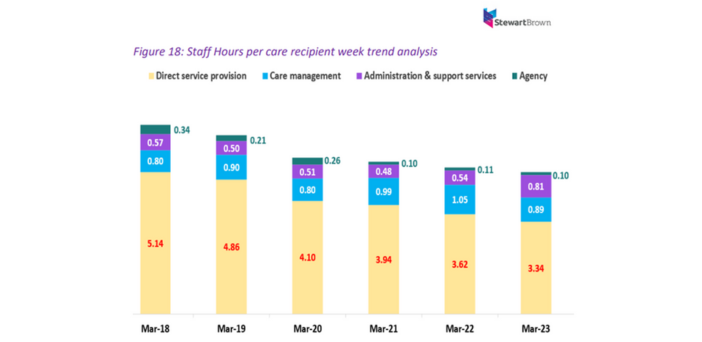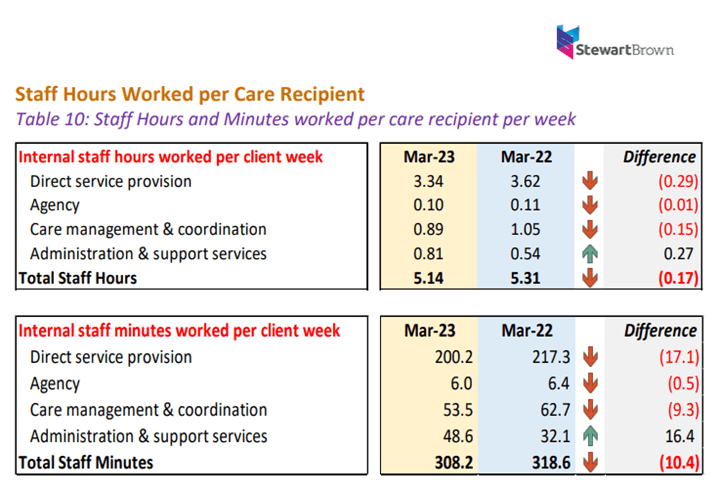Home care hours are declining – but it’s not as bad as you’d think
StewartBrown data for the March 2023 quarter shows a continuation in the downward trajectory of staff hours spent each week with clients. Staff spent 5.14 hours per care recipient in the three months, down from 5.31 hours for the March 2022 quarter...

StewartBrown data for the March 2023 quarter shows a continuation in the downward trajectory of staff hours spent each week with clients. Staff spent 5.14 hours per care recipient in the three months, down from 5.31 hours for the March 2022 quarter. The graph above shows the declining trend.
Most shocking are the figures showing that only 3.34 hours go to ‘direct service provision’, with the remaining nearly two hours (1.8) going towards agency costs, care management, and administration.

Stuart Hutcheon, Partner and head of StewartBrown’s Audit & Assurance Division, told The Source consumers aren’t spending the home care funds they are entitled to.

“On average home care clients are receiving less hours of care which is concerning but it is not a funding issue,” he said.
“There are a number of factors that contribute to this and in particular the availability of workforce.”
Wendy Mason, Operations Group Manager at BaptistCare at home, says staff shortages are reducing the number of hours home care consumers are receiving.
The trend is also being driven by changing consumer preferences.
BaptistCare’s Well Living program means multidisciplinary teams of registered nurses and allied health professionals are working with care managers and care workers with a focus on reablement. This focus means home care funds are often spent on home modifications or purchasing assistive equipment to enable independence and “reduce the reliance” on care workers.

Home care assessments are also changing, with the focus on ‘physical, social, and mental’ domains to encourage customers to think about what’s required to live well and stay connected to the community, not just choose from a list of services.
The SOURCE: The decline in direct care hours appears concerning, but could the trend, at least in part, be because consumers are more independent and enabled?





